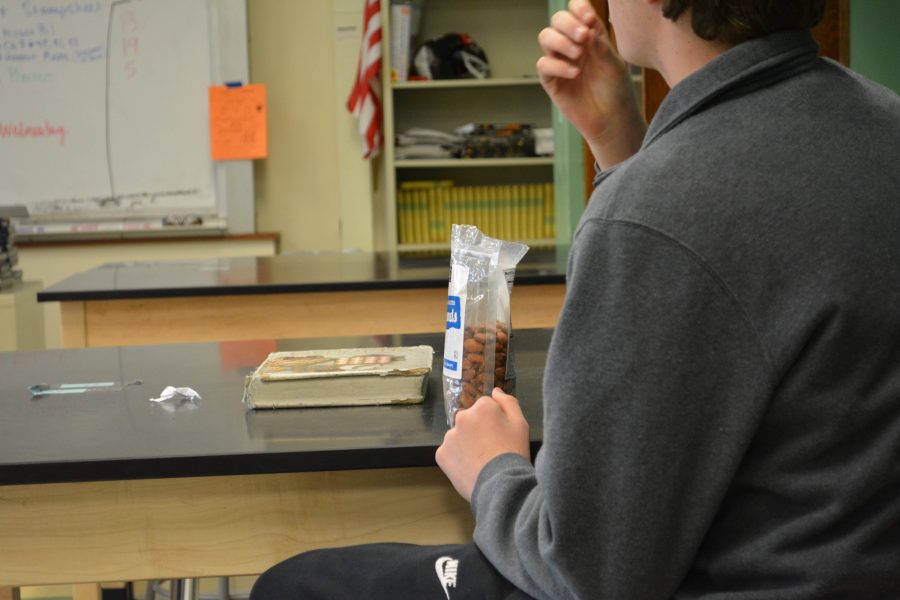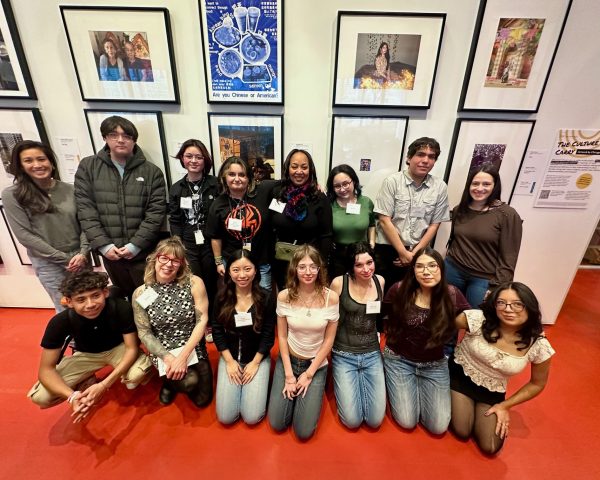Next assignment: Breakfast
Almost every student has felt their stomach rumble as they sat in a classroom listening to the teacher speak about a topic that they can barely focus on. All they can think about is sneaking a bite from the food they have hidden in their backpacks.
Something all high school students have in common is their persisting hunger and love for food. Those factors, in addition to stress, busy schedules, and reduced sleeping hours, increase students’ appetites and leave them searching their backpacks for food.
“We are in this school eight plus hours and have to be forced to wake up really early in the morning,” said Shakeba Reyez, Div. 771. “Most of us don’t have time to eat, so I’m eating wherever whenever.”
While many students choose to treat themselves to a snack during class time, some teachers have a problem with it. A common concern among teachers is that students often fail to clean up after themselves, which allows for bugs and mice to make their way into classrooms However, teachers are still at liberty to decide whether they allow their students to eat in class.
Mr. Gyomory is currently a calculus teacher at Lane. He said teachers should have “sound rules on the expectation of clean up” if they consider allowing food in class.
“The issue is ants and mice,” Gyomory said. “I do see lots of ants in this building. If students are responsible and the teacher can be accountable and hold the students accountable, I think it’s OK at times.”
Some students, like senior Rebecca Herrera, Div. 772, think that students more often than not are respectful toward their surroundings and clean up after eating, “Most people that I have witnessed eating in class have usually cleaned up after themselves,” Herrera said. “I guess teachers can be a little more harsh with the students who are messy eaters.”
Mr. Gyomory generally does not allow his students to eat big meals in class because he believes it is distracting for students. However, he makes exceptions if students are eating a small snack.
“If they have something in their bag and every now and then they grab a bite or something I’m okay with that,” Gyomory said. “If they’re just eating lunch and not doing what they should be doing, that’s not acceptable.”
However, students are tempted to take advantage of rules that allow them to eat in class by eating full course meals right on their desk, which can be a distraction to the learning environment.
“[If] students bring in foods like chicken wings from Jewel or something and make a huge mess, then it becomes a problem,” Gyomory said.
Reyez admits that she will eat anything in class.
“The craziest thing I’ve eaten in class was a full sized Polish sausage with a plastic knife,” Reyez said. “My teacher noticed because he gave it to me, and everybody wanted some because they were hungry, so I had to feed the whole community. Other than that I bring on full course meals: Chinese food, Wingstop, Mcdonald’s, corn, anything. Whatever I want to eat that day I’m taking with me. I’m hungry every 20 minutes.”
Gyomory, Reyez, and Herrera agree that eating in class does allow for students to be concentrated. If students are hungry, the they tend to focus on their hunger instead of what they are being taught.
“I tend to get bored when a teacher lectures for too long, so I find myself wanting to do something, usually eat,” said Herrera.
Although eating in class has both its advantages and disadvantages, it is still the teacher’s decision to decide whether to allow it and to what extent.
Your donations directly fund the Lane Tech student journalism program—covering essential costs like website hosting and technology not supported by our school or district. Your generosity empowers our student reporters to investigate, write, and publish impactful stories that matter to our school community.
This website is more than a publishing platform—it's an archive, a research tool, and a source of truth. Every dollar helps us preserve and grow this resource so future students can learn from and build on the work being done today.
Thank you for supporting the next generation of journalists at Lane Tech College Prep!

Yoanna Zhelyazkova is a web editor for The Warrior. She is the president of an I-Days club and a mentor for incoming freshmen. In her free time she likes...




